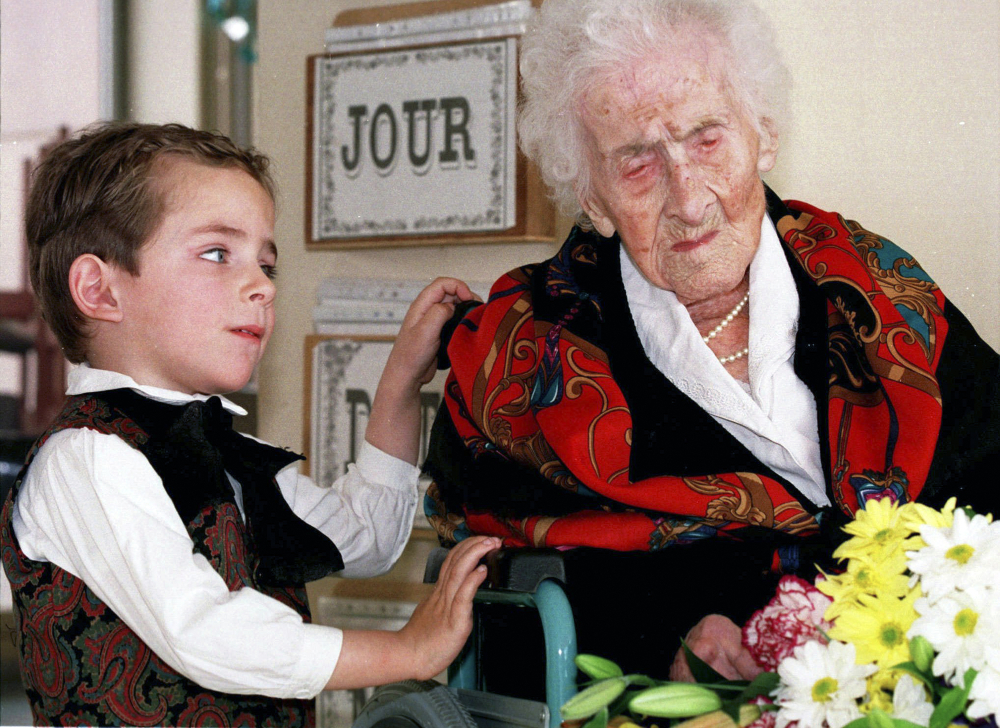Life-extension zealots have championed many strategies aimed at prolonging our days here on Earth, and not all sound like much fun (think caloric restriction).
Supercentenarians – those rare humans who live beyond the age of 110 – by contrast seem to embrace much more appealing life-extension strategies: They routinely endorse regular naps, consumption of large quantities of chocolate, and a daily nip of strong drink, for instance.
In short, when it comes to living longer, mysteries abound. The question is not just how to do it, but whether, even if scientists could distill the fountain of youth, there is a limit to how long humans could be made to live.
A new study offers a tentative answer to the latter question. Writing in the journal Nature on Wednesday, researchers at the Albert Einstein College of Medicine in New York City conducted a complex statistical calculation and concluded that there is such a limit.
Led by geneticist Jan Vijg, the team asserts that humans who have walked among us have hit that limit. And they calculate that if we could cobble together 10,000 people who had reached the age of 110 (a big and theoretical if), the statistical likelihood that just one of them would live beyond 125 in any given year would be 1 in 10,000.
Long odds, those.
In 1997, the longest-lived human ever recorded — a 122-year-old Frenchwoman named Jeanne Calment — died, reportedly with her mental faculties still intact. Attributing her long life to a diet rich in olive oil, port wine and chocolate, Calment was the only person whose age, at death, was verified to have exceeded 120.
Today, at 116, an Italian woman named Emma Morano is the oldest known person alive. At 113 and 111, respectively, Americans Adele Dunlap and Agnes Fenton (both living in New Jersey) are not far behind.
To reach this point, all of those women (and yes, supercentenarians are overwhelmingly women) have made it out of infancy, fought off dangerous infections, survived childbirth and eluded the deadly talons of heart disease, cancer and injury.
But eventually, they will all die of something. Why?
Probably, the authors suggest, because if nothing else gets us, some structural limit of our design simply becomes our undoing.
University of Illinois demographer and aging researcher S. Jay Olshansky explains.
We must die eventually, he suggests, because humans have a body design that evolved to hang in there long enough for us to live long enough to reproduce, ensuring the survival of the species. Once we’ve accomplished that, he suggests, nature has been spectacularly indifferent to parts that wear out, electrical currents that short-circuit, and cells that act on bad information and replicate like crazy.
Our bodies, in short, did not evolve to live into extreme old age.
If living long had been the point of human evolution, said Olshansky, we probably wouldn’t still have “Achilles’ heels” such as neurons and muscle fibers that don’t divide and replicate like other cells of our bodies do. Eventually, when those cells die and aren’t replaced, our brains shrink and our hearts weaken.
People who live long enough for these foibles of the human body to catch up with them aren’t sick when they die, their bodies have just worn out, said Olshansky.
“There isn’t a time bomb that’s ticking,” he said. “But we have a body design that’s fixed. We’re structured like we are because natural selection made us like we are.”
For the same reason, he suggests, there may be a mechanical limit on how fast a human can run. We can train harder, wear better shoes, develop more aerodynamic techniques to make us faster, he says. But eventually, we will likely run up against the mechanical limitations of the human design (which, after all, evolved to balance speed of running against many other priorities that help us survive long enough to reproduce).
Send questions/comments to the editors.


